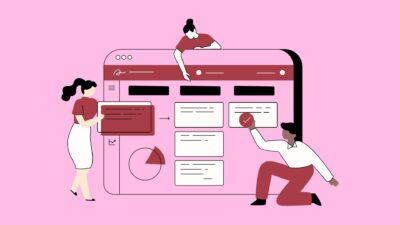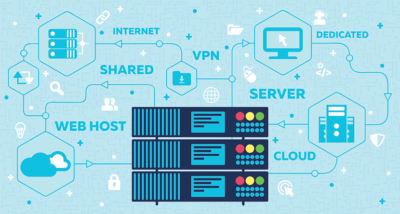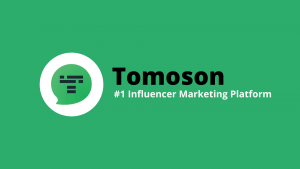In the modern world, technology as a tool has become indispensable in all areas of our lives. Whether in education, communication, work, entertainment, or even as a room planner and interior designer. Essentially, it surrounds us and helps us face daily challenges. We stay connected to people worldwide, access instant information and solve problems efficiently.
Technology also drives innovation and progress in various industries, from medicine and energy to transportation and agriculture. In short, technology has transformed the way we live and has become a fundamental pillar of modern society. A technology tool is an electronic, digital, or physical resource that can support professionals in delivering and testing content.
To enumerate, technology tools include applications, platforms, and software and can be used in Virtual Reality (VR), hybrid, or traditional learning environments. While technology undoubtedly has a role to play, it must go hand in hand with people. Every product and service we create is ultimately built to serve people. Technology can empower us in many unique ways.
And although it can be incredibly useful and multifaceted, it is just a tool — a person needs to come in handy to wield it effectively. How is technology as a tool viewed in society today? Well, we’ll discuss a few aspects of it in this article.
How Technology As A Tool Cuts Across All Innovative Knowledge Areas
How humans use tools and technologies determines the tech benefits or harms. Fire can be used to cook a meal and thus be helpful. It can also be used to harm or destroy. Rocks can help build a shelter. They can also be used to injure someone. So, the bigger questions worth asking involve how humans, individually and in communities, choose to use technologies.
Ideally, we may use technology as a tool to uplift individuals. Also, technology doesn’t operate in a vacuum. Human laws and narratives also influence outcomes. Our tool use is connected to our use of narratives, laws, and technologies to distribute power. Starting with the beginning of history, we used fire and stone tools to transition from a nomadic lifestyle to the one now.
Essentially, this is where we began to settle and plant crops. Our use of tools helps give rise to civilization, including the advancement of writing, the development of calendars for crops, and the start of navigation of the seas. As our communities grew, so did the use of tools, and the development of more advanced tools, like metal tools and weapons, came by.
For example, we can say that bows and arrows later resulted in gunpowder and flintlock firearms. Such tools as technological developments expanded civilizations and disrupted power distribution within societies. Certain technological developments, like railroads or radio, allowed certain individuals to aggregate power. Below are a few more aspects to know:
1. The influence of technology on scientific and technological development
Technological advances have been the driving force behind numerous breakthroughs and discoveries in different fields. Through technology, scientists and researchers have accessed more advanced and sophisticated tools, allowing for more accurate and detailed investigations. In addition, technology has accelerated the process of data collection and analysis.
As a result, leading to advances in areas such as medicine, Artificial Intelligence (AI), and biotechnology. In other words, technology as a tool has been a crucial catalyst for scientific and technological progress, opening up new possibilities and challenging the limits of human knowledge. “Technology is just a tool!” – Bill Gates.
2. Technology as a key driver of innovation in different sectors
Technology has proven to drive innovation in various sectors, transforming how we work, communicate, and live. In industry, automation and artificial intelligence have optimized production and improved efficiency. In medicine, technology has enabled diagnosis, treatment, and healthcare advances. Renewable energy and energy efficiency have revolutionized things for us.
Such as how we obtain and use energy. Even in the architectural field, it has influenced the creation of floor plan software and other related application tools. These are just a few examples of how technology drives progress and innovation, opening up new opportunities and challenges in every sector.
3. Technology and its impact on society and culture
The global connectivity provided by the internet has opened up new opportunities for communication and access to information. Social networks and digital platforms have changed how we connect and share experiences with others from around the globe. Technology has influenced the creation and consumption of content, such as music, film, and literature.
However, it has also posed privacy, inequality, and technology dependency challenges among many users. Therefore, understanding and adapting to this impact is critical, particularly in helping us maximize technology’s benefits and minimize its challenges in society and culture through proper usage.
4. Technology and its Impact on home design
Technology has revolutionized home design, providing innovative solutions and improving the functionality and comfort of spaces. From home automation to smart materials, technology has enabled the automation of household tasks, the integration of security systems, and energy efficiency. Advances in virtual and augmented reality have facilitated architecture.
Especially through the visualization and planning of architectural projects. Today, architects can use a floor plan creator online from their homes — this was unthinkable years ago. In addition, it has driven the creation of smart homes, where devices are connected and controlled through wireless networks. The impact of technology on home design has also transformed how we live and relate to our home environment.
5. The importance of technology in education and training
To begin with, technology as a tool can be a powerful aspect of transforming learning. It can help affirm and advance relationships between educators and students, reinvent our approaches to learning and collaboration, shrink long-standing equity and accessibility gaps, and adapt learning experiences to meet the needs of all learners. Students use it daily to learn.
For instance, they can use technology to review lectures, complete assignments, and organize and present information representative of their learning. In most cases, students can access computers in the library, four computer labs, and their English classes. It is present in all aspects of our lives, and students must acquire technical skills in their learning.
More so to meet the challenges of the 21st century. Technology education provides students with the tools to understand, use and make the most of new technologies.
It teaches them to be critical and creative, solve problems innovatively, and communicate efficiently in digital environments.
As a tool, technology also fosters collaboration, team building, and teamwork. Technology training in today’s education is essential to prepare students for an increasingly technological and globalized future.
6. The ethical and legal challenges of technology in the 21st century
In the 21st century, technology poses several ethical and legal challenges that we must address. Rapid technological advancement has raised questions about privacy, the use of personal data, artificial intelligence, and automation. We face ethical dilemmas around information manipulation, algorithmic discrimination, and accountability for machine decisions.
In addition, legal aspects must adapt to these new realities by establishing clear regulatory frameworks and appropriate regulations. It is essential to address these challenges in a collaborative and multidisciplinary manner to ensure that it is used ethically and responsibly for the benefit of society.
7. Technology as an enabler of global communication and connectivity
Technology has revolutionized the way we communicate and connect globally. Thanks to tools like the Internet, social networks, and messaging applications, instant communication, and information exchange have become accessible worldwide.
It has broken down geographic and cultural barriers, allowing us to establish connections with individuals.
We can connect with communities in every corner globally. The ease of access to information and the ability to collaborate remotely drives global collaboration and networking, fostering a more interconnected and collaborative world.
In Conclusion;
Technology has transformed how we communicate and connect globally, and its impact on society and culture is undeniable. We can establish instant connections with people worldwide through digital tools, sharing ideas, experiences, and knowledge. This has led to greater cultural diversity and the possibility of accessing different perspectives and ways of thinking.
However, we also face challenges like the digital divide and technology dependency. Taking advantage of technology responsibly is important, promoting inclusion and digital education. It has opened up a world of possibilities regarding communication and global connectivity. It is up to us to use it ethically and constructively to strengthen human ties.
In addition, if technology as a tool is used wisely, it may also help us promote a more collaborative and supportive future. It must be remembered; tools are made to be used. How they are used, who uses them, and what they are used for determines their impact. Some analysts refer to the impact of revolutionary tech of the past and the ways they were used to affect change.









